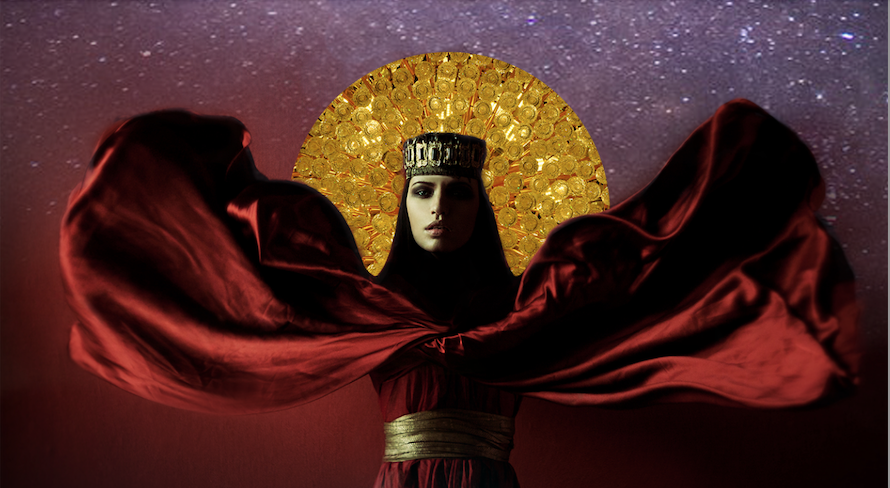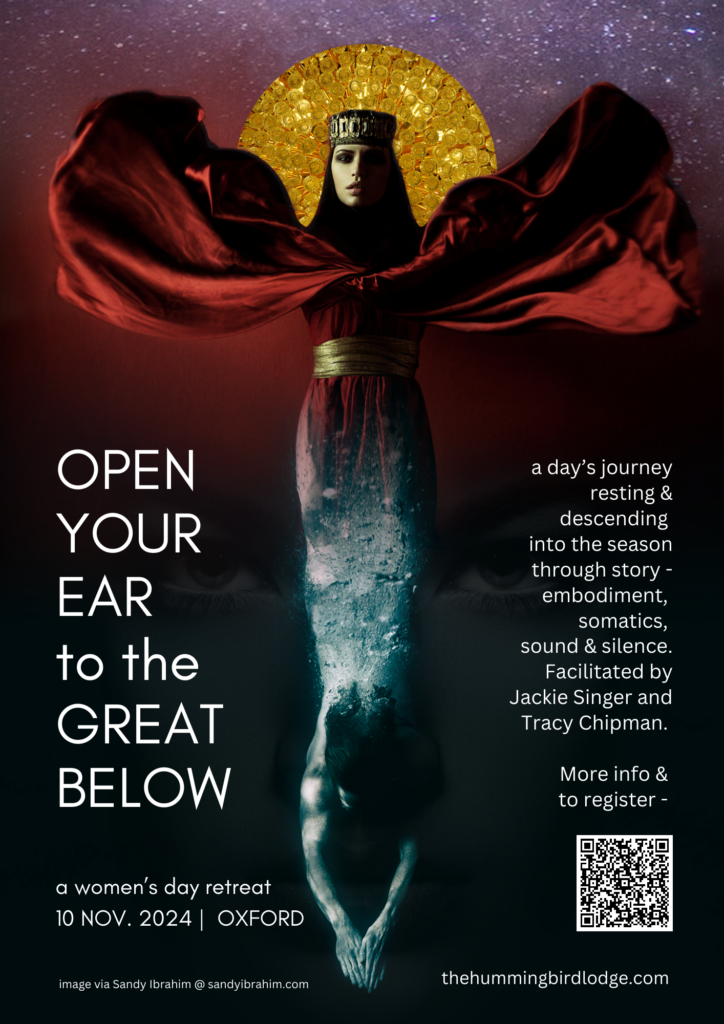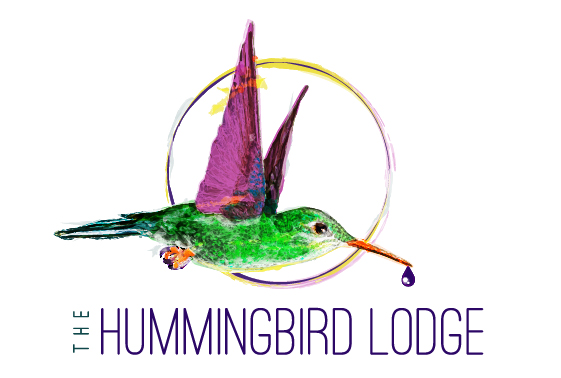
For the last two winters I have run a group for women called Wintering Together. We gather in a friend’s house. We light a candle. We share. There are stories and songs. We settle into silence. We acknowledge the slower tempo of the winter months. For just one evening every fortnight, we allow ourselves to rest together. Sometimes we just sit in the darkness and do nothing. Sometimes we hold each other, offer physical touch. It’s a conscious allowing of the darker half of the year. Instead of filling it up with TV, shopping, parties, we allow what is more natural – space. And when we do this, there is always a sense of relief: Ahhh . . . here we are. Darkness, presence, breath.
Sometimes, come September, I look at the garden that’s overgrown with bindweed and I’m glad that it’s going to die back. I’m glad I don’t have to tend it all through the winter. I’m grateful for the decay part of the year. I love Spring. I love new beginnings. I love freshly dug soil, waiting for the new seeds to be sown. But without the dying back, and the cutting back, that wouldn’t be possible. It’s not pretty, the dead leaves and spent flowers. But thank God! Thank God it doesn’t go on forever, this burgeoning. Come the Spring, all the failures of this year’s garden will be forgotten. We’ll start afresh, with new hope.
So far so good. It’s not so hard to appreciate the descent cycle that is natural, regular, predictable. But what about the involuntary descent? The sudden death of a loved one. Illness. Failure. The accident when you had planned a holiday. The C-section when you had hoped for a home birth. A global pandemic. In some ways – and this is a paradox – the only choice we have at this point is our willingness. We have to go there. We don’t have to go there willingly. We can go fighting, raging. Or, we can surrender. We can slowly nod our head up and down, say yes, this is what is happening, I’m going into the darkness now. At these times it helps to have practised the art of going inward, letting go of the plan, letting go of the growth, engaging with the cycle of death and decay. And it’s very good to have a map.
The myth of Inanna and Ereshkigal gives us an extraordinary map of the territory of descent. “She opened Her ear to the great below” are the first words of this 4,000 year old myth, etched onto stone tablets in ancient Sumer. Inanna begins by listening. She notices the underworld. She is called by it. She is curious. Ereshkigal is her sister, no less divine, no less awesome than She, the Queen of Heaven. Ereshkigal in this story is Grieving Woman. She is wild with rage and grief after the death of her husband. The story shows us how to go to the underworld and visit this shadow part of ourselves. Inanna is stripped of all her regalia. She does not enter as a queen. She enters utterly humbled. She is taken to the very edge and beyond. But the story does not end there. It teaches us that we can come back. But how?
Since the Spring of this year, I have watched one of my best friends go through a winter of her own – three rounds of chemotherapy for leukaemia. It is a brutal experience that takes her to the edge of her capacity, physically and mentally. Her work is stripped from her, her mothering role is stripped from her, her energy and power is gone, her home is banned to her, her beauty is ravaged by boils and cold sores, even her hair is gone. Each of these losses is an involuntary gateway to the underworld, where she can, if she finds it in herself, nod her head and say yes, this is how it is. I go down. I do not know if I will return. I surrender. Then the chemicals kill her white blood cells until she has none of her own immunity at all. She could die from a common cold. When her neutrophil count is zero, she is given blood transfusions, and a combination of these and her own body’s regeneration brings her back to life. Until the next time.
The medicine in the myth also comes from outside of Inanna and Ereskigal. It is Inanna’s lady in waiting who acts on her behalf, and through her efforts, the God Enki creates a pair of fly-like creatures from the dirt from under his fingernails. They go down unnoticed, slipping through the seven gates unseen. But it is their tending, listening, empathy, that finally catches the attention of Ereshkigal. When she sighs, they sigh. When she rages, they rage with her. They are alongside her. They allow her to stand alongside herself. This is the breakthrough that allows the Water of Life and the Food of Life to be brought to Inanna. In other words, we cannot do the work of rebirth alone. In my friend’s case, her body must replenish its own neutrophils, but it is also the generosity of strangers who gave their blood that saves her.
Oh, we can descend alone; sometimes we have to. But what redeems us is community, love, being heard, being accepted by others. And so, it is not by accident that we work with this story in a group retreat* – live, in person, with physical touch, with the vibration of human voices in the room. We invite you to come and experience the story in your bones, so that when descent comes, as it inevitably will, you may be in the dark, you may be in pain, you will certainly be uncomfortable, but somewhere in the cell beds of your memory, you will recognise the territory, and take courage.
*”Open Your Ear to the Great Below” On 10th November, Tracy Chipman and I will lead a one-day retreat for women in Headington, Oxford. With somatics, deep rest, and myth enactment, it will be an opportunity to experience the alchemy of the story.
For more info and bookings see booking form.

